What’s the dominant taste of Russian cuisine? Surely it’s the sour taste of fermentation — sour cabbage (sauerkraut), sourdough rye bread, soused apples and, of course, sour (pickled) cucumbers. Real barrel-fermented pickles are delicious as appetizers and as ingredients for many dishes. Soups like rassolnik and solyanka and the classic salad “vinaigrette” wouldn’t be possible without these appetizing pickles.
Everyone knows the basics of pickling: put cucumbers in a barrel, add dill, cherry leaves, salt, and garlic. Cucumbers made in a barrel are exotic today. But in the past, there wasn’t a house without them. The main problem was where to put the barrels. Cucumbers are more delicate than cabbage. If they freeze, they lose all their flavor, but heat can ruin them, too.
Cucumbers were stored in the hayloft, in the cellar, or even put in pits dug in the garden. Barrels of cucumbers were covered with snow and pine boughs. But outdoor storage methods were used with caution, since a cold snap could ruin everything.
To protect pickles from temperatures below freezing, “Holynya cucumbers” were invented. The village of Holynya in the Novgorod province gave its name to this clever method of preserving cucumbers: barrels filled with pickles were lowered into the river under the ice. Under the ice the temperature is constant — about 2-3 degrees Celsius (about 35-37 degrees Fahrenheit). The one problem with this method? Sometimes householders couldn’t get their barrels out until the ice broke on the river in the spring. But in March the pickles were perfect!
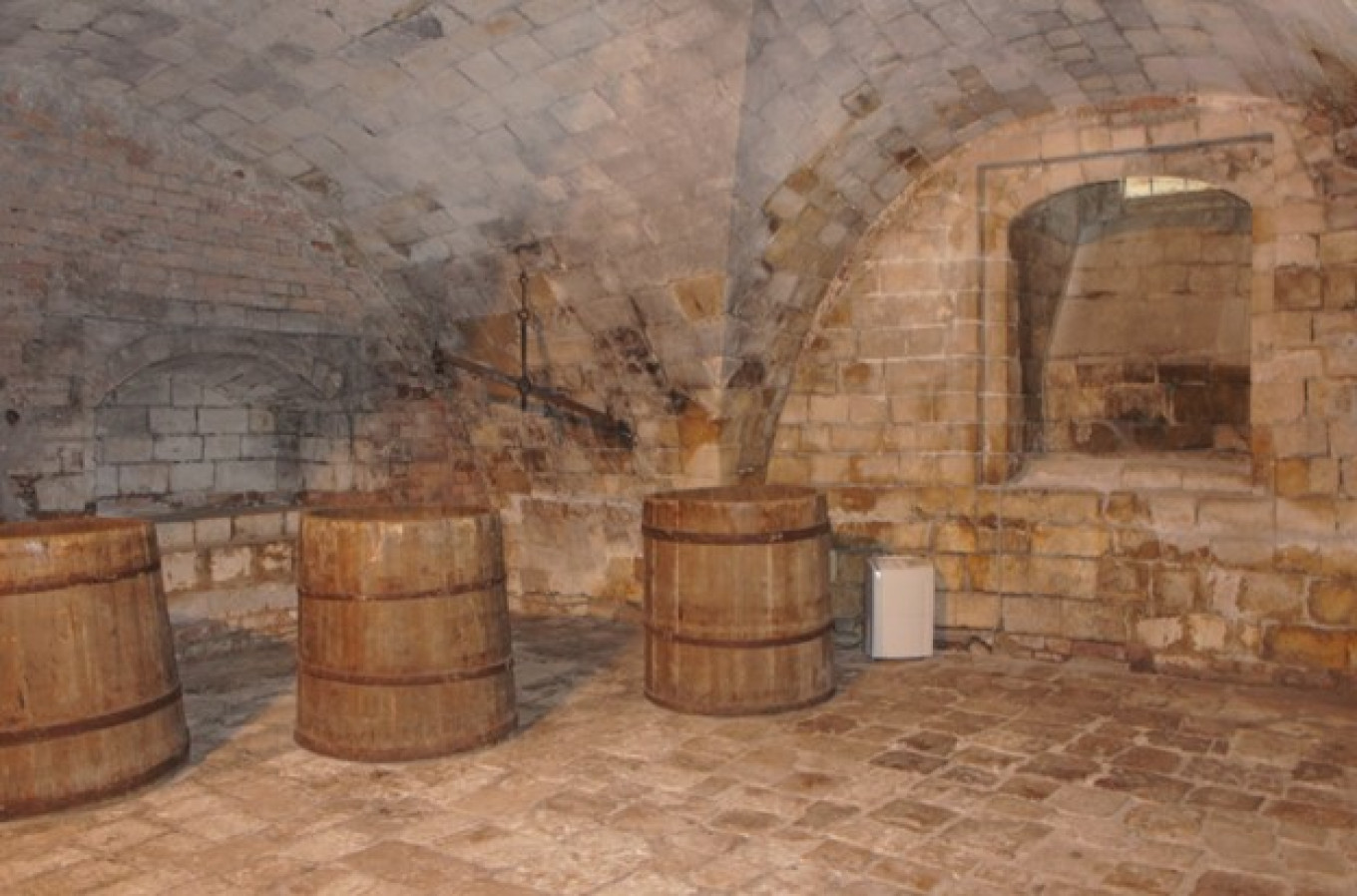
Cucumbers in sealed barrels were stored under the ice in Moscow, too. At the beginning of the 20th century barrels were placed by the Moskvoretsky bridge near the Kremlin. Each merchant had his own place near his own section of the bridge. Barrels tied to the bridge were pulled out when they were needed to replenish supplies in the shops.
But this isn’t the only surprise when you look at the history of pickling cucumbers. For example, here’s an advertisement in an old magazine: “Moskvorets cucumbers: especially delicious, pickled in pumpkins.”
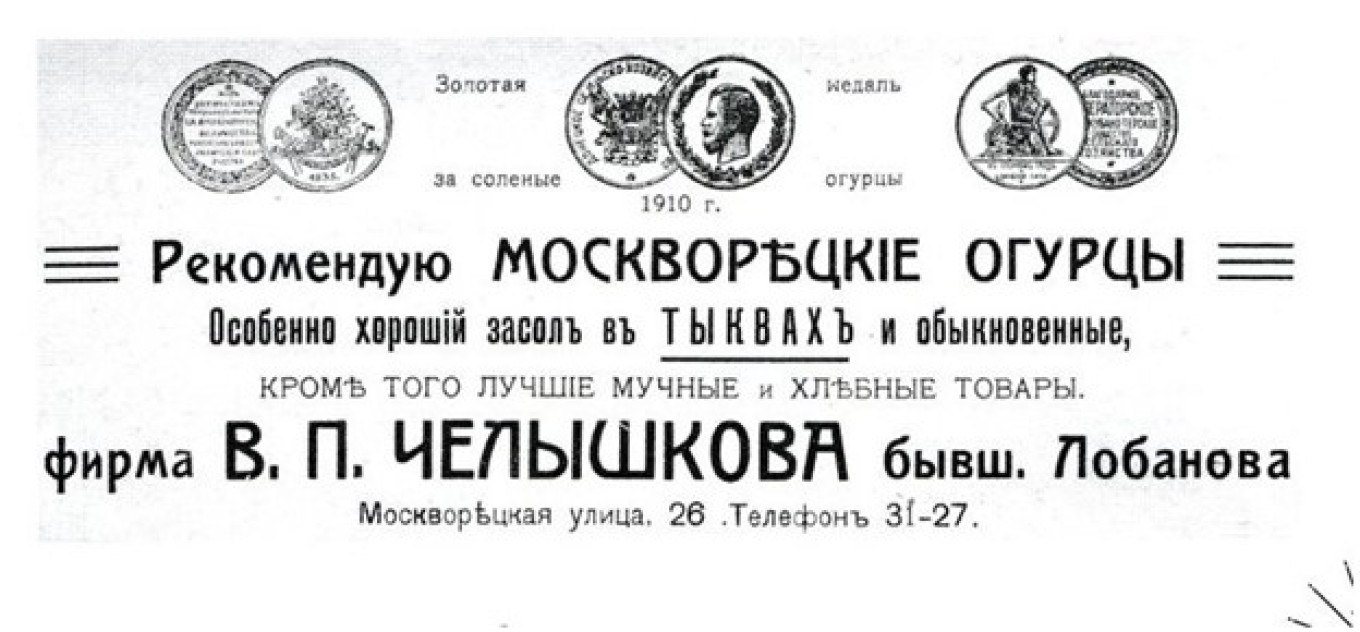
This was not false advertising. For centuries people knew and loved this method — actually, two methods. In one method, a large pumpkin would be scraped out, cucumbers would be placed inside and then brine would be poured in over them. In the second method, several pumpkins filled with cucumbers would be put in a barrel and submerged in brine.
The pumpkin was said to add crispness and sweetness to the cucumbers. By the way, in the traditions of Russian cuisine the cucumber is often paired with sweet flavors, both fresh and salted cukes. In “The Writer’s Diary” (1877) Dostoevsky remarks: “No matter how long they live among the common folk, people like Levin will never quite be one of them, even if he knows that fresh cucumbers are served with honey.”
A similar way of serving cucumbers seems very strange to people today: sprinkle sugar on pickles. This is still done in many places, including in the Vladimir region.
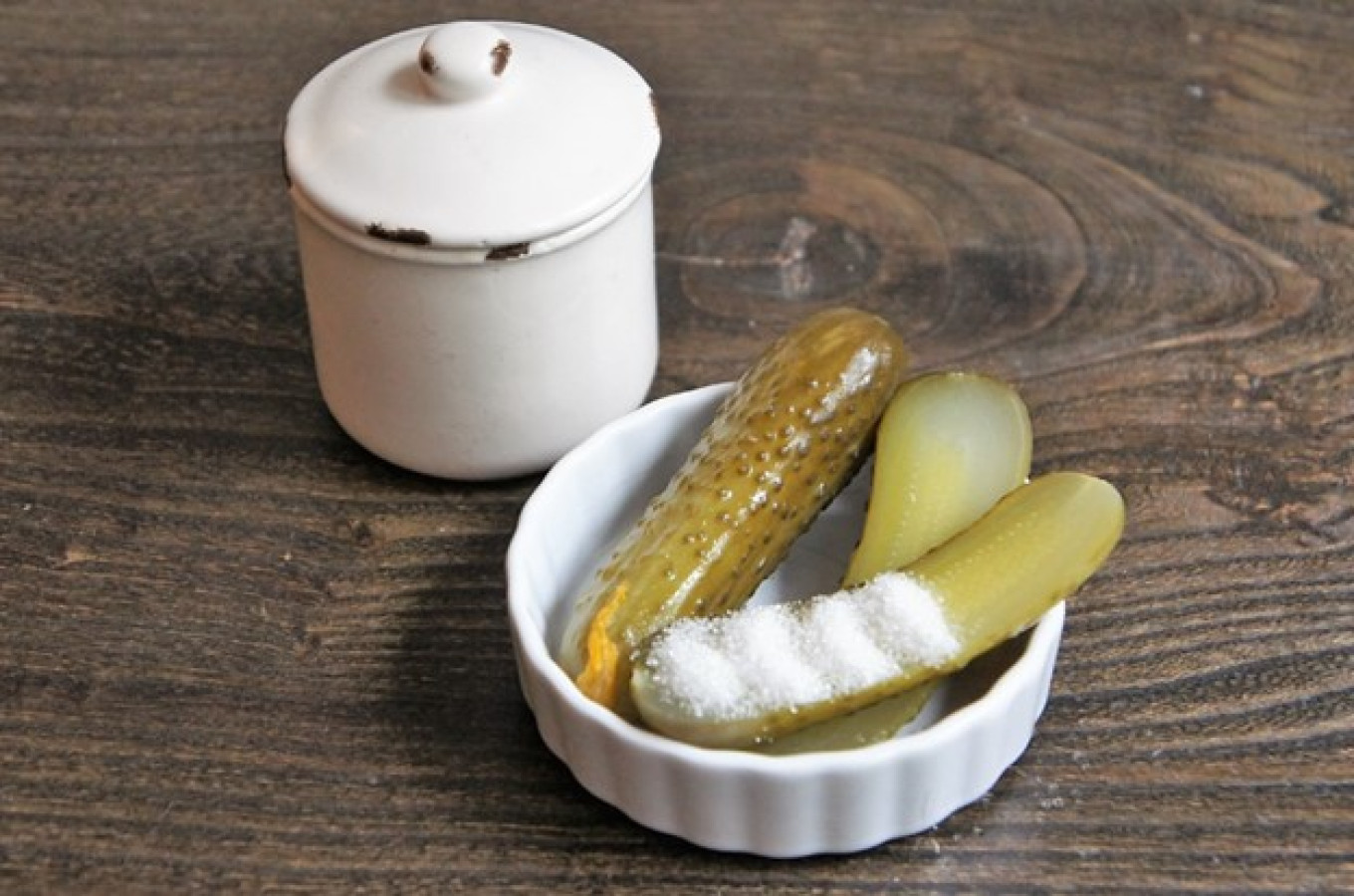
“When I was a kid we used to scarf them down,” Natalia Doronina, a grandmother and farmer in Suzdal, told us. “They were so delicious. Today, before our meeting, I took out a cucumber, sprinkled it with sugar and ate it. Back then it was a real treat for us kids. We’d wait for them to cut them in slices, sprinkle sugar on top and bring them out to us. There was nothing more delicious.”
When was this? The 1960s — not so long ago.
Today you can only dream of cucumbers in barrels unless you have a big cellar. But that’s all right — we can still put up pickles in jars. They will be almost the same, just without that characteristic “barrel” flavor.

Pickles in Jars
To fill a 10-liter (2.6 gallon) container (jars or crock)
Ingredients
- 6.5 kg (14.3 lb) cucumbers
- 3.5 liters (just under a gallon) water
- 250-280 grams (about 8.8-9.9 oz) salt (depending on the size of cucumbers)
- 12-16 cloves of garlic, divided in half
- Tops and stalks of mature dill with seeds; currant, cherry, oak, and horseradish leaves — enough for two batches of pickling
- Optional: 2-3 hot peppers
Preparation
- Wash the cucumbers and put them in a large container, pour cold water over them and let them soak for 2-3 hours.
- Wash the pickling “bouquet,” cut the dill stem, peel the garlic.
- After soaking, rinse the cucumbers again, cut off the tips and put them in the container(s). Place pickling leaves on the bottom of the container, sprinkle the spices and garlic over the cucumbers. Top with pickling leaves.
Tip: Do not fill to the top — leave about 10 -15 cm headspace for the weight and fermentation.
- Prepare the brine. Dissolve the salt in water and bring the brine to a boil. Try the brine: it shouldn’t be too salty or not salty enough. Remember that salt is not a preservative, but a flavor additive.
- Pour the hot brine over the cucumbers and weigh them down so they don’t float. Place them in a dark place at room temperature to ferment. The larger the volume, the faster the fermentation process. The brine will become cloudy.
- By the end of the second or beginning of the third day, taste the cucumbers: they should have a pleasant sour-salty taste. Fermentation time depends on the temperature in the room.
- Drain the brine, pour half into a pot and add new water and salt to taste. Bring it to a boil, skimming any foam that may form.
- Transfer cucumbers to jars with fresh garlic and pickle “bouquets.” Pour in the hot brine and close with lids.
The cucumbers are ready to eat as soon as they cool, but they taste even better after a month.
For lovers of “Russian spirits” — pickles are, of course, the perfect appetizer for vodka. But there was cucumber-flavored vodka and vodka-flavored cucumbers, too. Everything about this recipe is perfect.
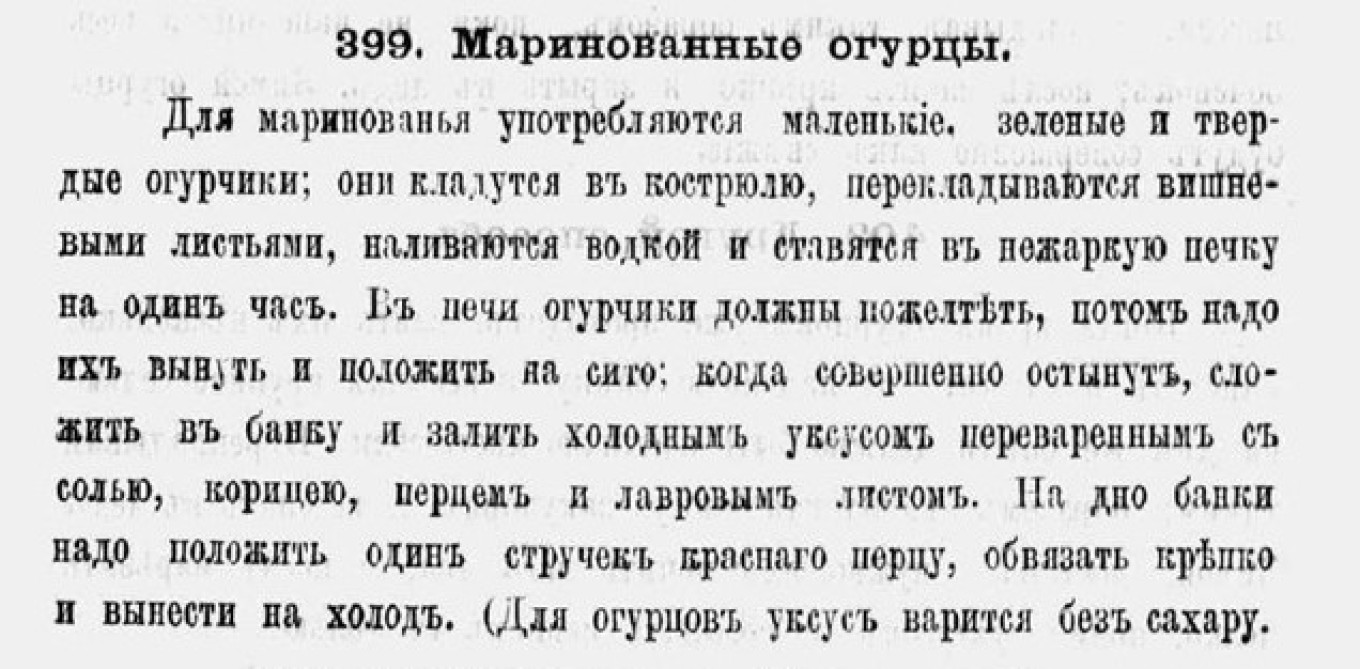
Marinated cucumbers
For marinated pickles, use small, green and firm cucumbers. Put them in saucepan, cover with cherry leaves, pour vodka over them and place them in the oven on a low temperature. In the oven the cucumbers will turn yellow. Take them out and put them in a sieve. When they are completely cool, put them in a jar and pour in cold vinegar that had been boiled with salt, cinnamon, pepper and bay leaf. At the bottom of the jar put a red pepper, close tightly and put it in a cool place. (When making marinated cucumbers, the vinegar is boiled without sugar.)
These are marinated cucumbers, part of Russian home cooking, although in the mid-19th century the word “marinade” was unknown to Russian peasants.
Vinegar was a common product in Russian medieval society. The early book for housemakers, “Domostroi” (1550s) mentions tableware: “ladles, vinegar pots, and pepper shakers.” Vinegar was made of beer wort (the liquid extracted from the mashing process during beer brewing). It was fermented and acquired a rich straw-yellow or light-brown color and pleasant, mild taste. Like other naturally brewed vinegars, the acidity was about 5-6%.
Malt vinegar is not an exclusively Russian discovery — it was made in many parts of the world where grapes could not be grown. Malt vinegar was very popular in England in the Middle Ages, where it was added to many dishes. In the 19th century in Scotland it was served with the newly popular fish and chips. It seems to have also been used in canning, giving the marinades a light brown tinge.
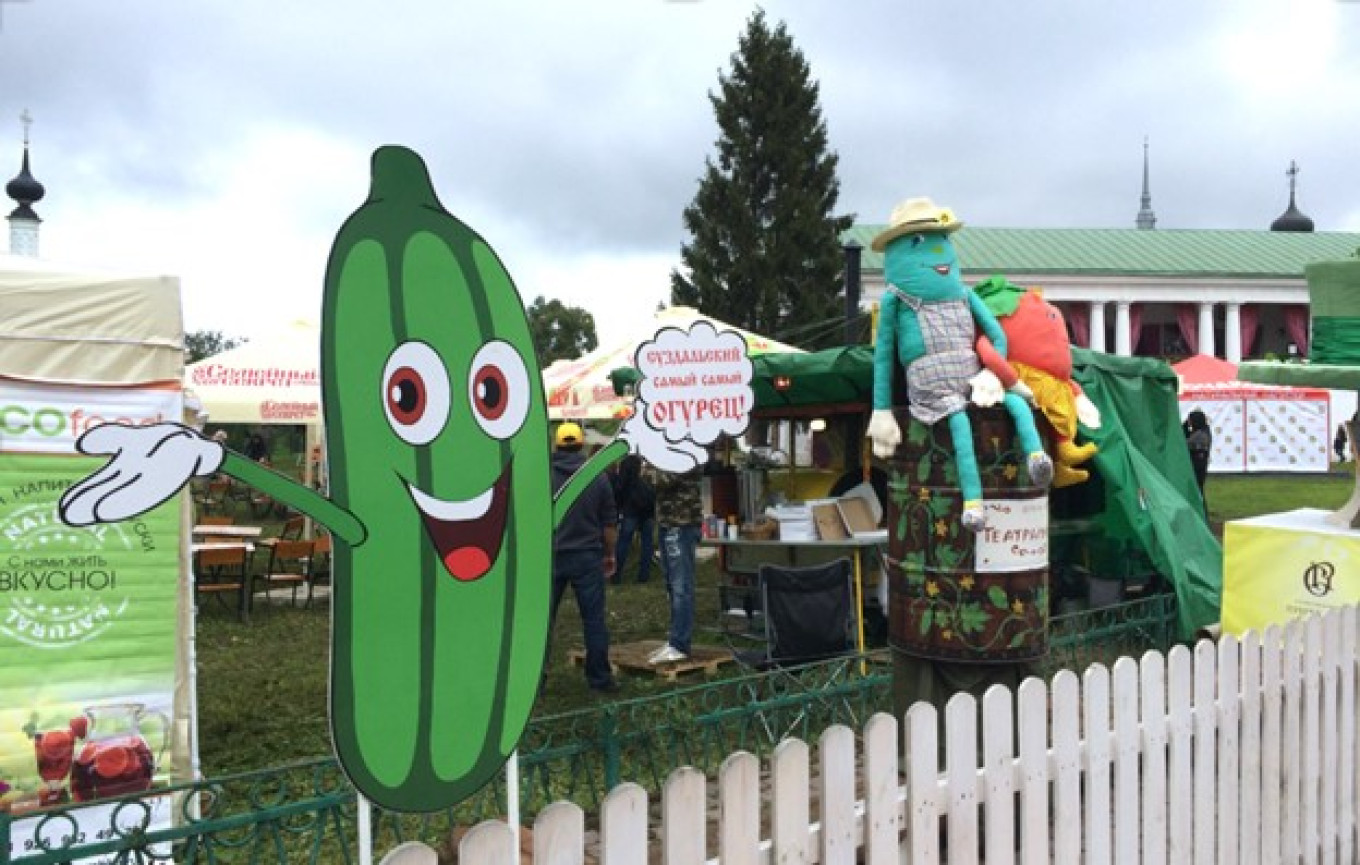
Not everyone likes slightly sweet pickles. So here’s a recipe with no added sugar — sour and salty, flavored with garlic and dill. These cucumbers are great with steak, stew, roasted and boiled potatoes.
Pickled cucumbers with garlic and dill
For two 1-liter jars (two 1-quart jars) — a jar holds about 10-11 medium-sized cucumbers weighing a total of about 1.3 lb (550-560 grams)
Ingredients
- 1 kg 200 g (2.6 lb) cucumbers
- 240 ml (1 cup) apple cider vinegar
- 240 ml (1 cup) water
- 2.5 tbsp salt
- 8 garlic cloves
- 1 tsp red hot pepper
- 4 tsp dill seeds
- 2 tsp black pepper
Preparation
- Prepare sterilized jars and lids.
- Wash the cucumbers, shake off the water, cut off the tips and soak for 2-3 hours in cold water. Peel the garlic.
- If the cucumbers are large, you can cut them into circles or wedges
- Mix the vinegar, water and salt in a non-reactive saucepan. Bring to a boil over high heat.
- Tightly pack the cucumbers in jars. Divide the spices equally and add to each jar.
- Pour the hot marinade over the cucumbers, leaving 1 cm headspace.
- Wipe the edges of the jar, close with lids. Store in a cool place.
- For room temperature storage, put the sealed jars in a canner, cover with an inch of water, and sterilize for 10 minutes.
Sliced cucumbers will be ready to eat in 10 days. Whole cucumbers will take a little longer.
Leave a Reply